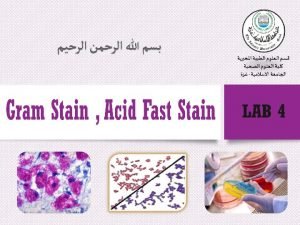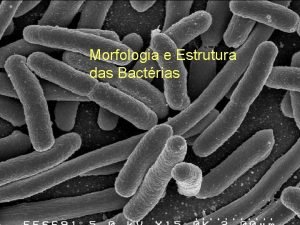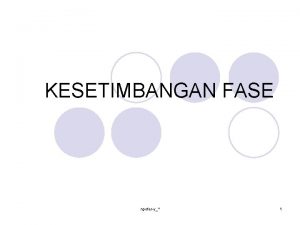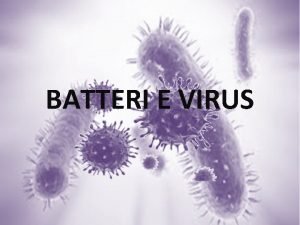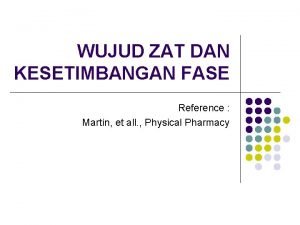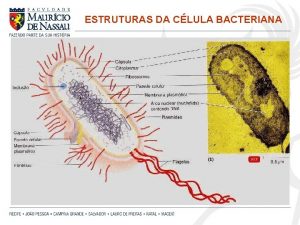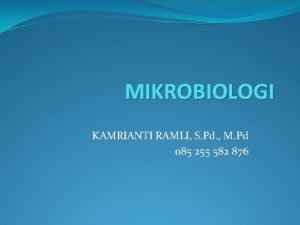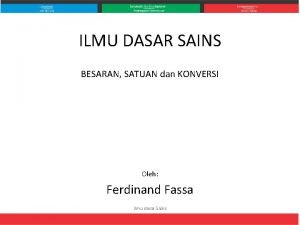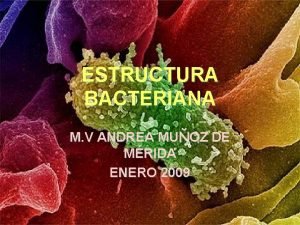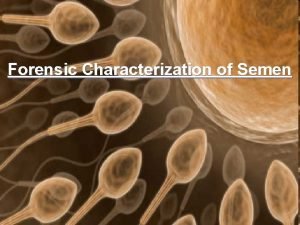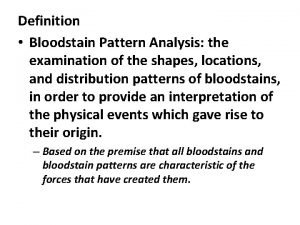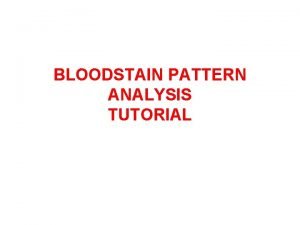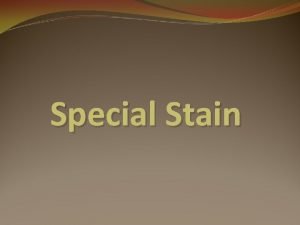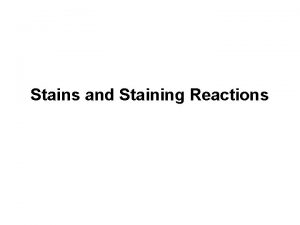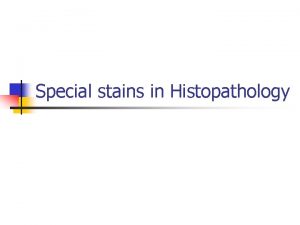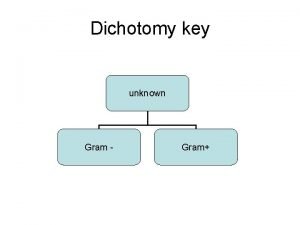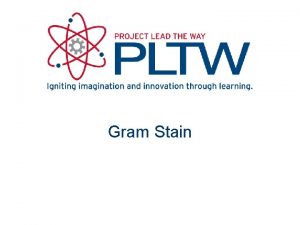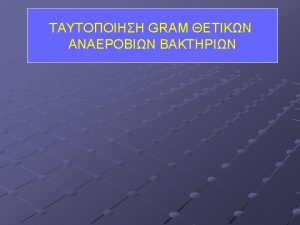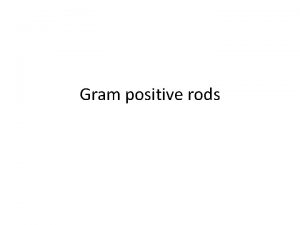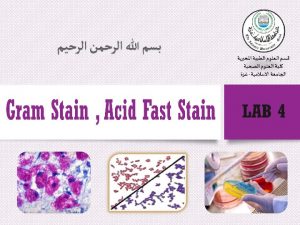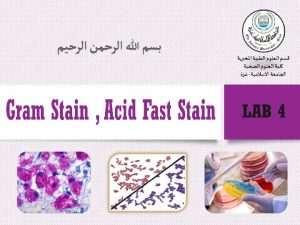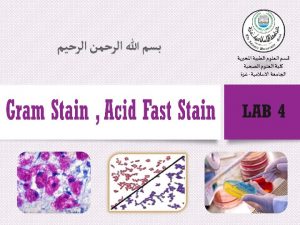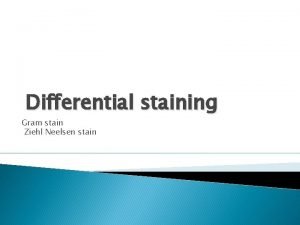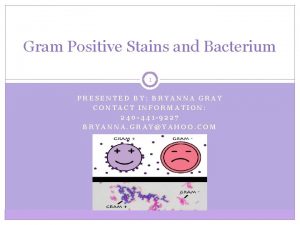GRAM and ACID FAST STAINS Differential Stains Gram



















- Slides: 19

GRAM and ACID FAST STAINS

Differential Stains • Gram Stains and Acid Fast Stains are differential stains (use more than one color) – Color should be on opposite sides of the color wheel to make visualization easier

What is a gram stain? • One of the most important biological staining processes in microbiology • Differential stain • Used to separate all known bacteria into 2 groups – Gram positive – Gram negative • Dependent upon the construction of the bacteria's cell wall – The cell will either retain or lose the first dye

Cell Wall Of Gram Pos & Neg

The Gram Stain Procedure Step 1 - Prepare a Smear Prepare the smear as we did last week. Use a mix of either: • Staph and Pseudomonas • Staph and Bacillus • Bacillus and Pseudomonas Watch what happens to the “Bacteria” at each step “Bacteria”

The Gram Stain Procedure Step 2 - Apply the Primary Stain Flood the Smear with Crystal Violet. Crystal violet is a basic dye, stains all the cells purple The dye is positively charged and is attracted to the negative charge of the bacterial cell wall Allow to stand for 1 min, rinse with water to remove excess stain

The Gram Stain Procedure Step 3 - Apply the Mordant Flood the Smear with Iodine solution The iodine forms an insoluble complex with the crystal violet to anchor it into the cell wall Allow to stand 1 min

The Gram Stain Procedure Step 4 - Rinse with water to remove excess Iodine

The Gram Stain Procedure Step 5 - Decolorizer Drip Decolorizer (80% Methanol +20% Acetone) across the slide about 2 -3 sec This removes the outer membrane of the gram negative bacteria, leaches the dye-mordant complex out of gram negative cells

The Gram Stain Procedure Step 6 - Rinse immediately with water to remove excess alcohol

The Gram Stain Procedure Step 7 - Counterstain Flood the slide with Safranin solution Let stand for 1 minute The gram negative cell wall will pick up the dye.

The Gram Stain Step 8 - Rinse, Dry and Observe Rinse with water to remove excess stain Blot dry Observe under Oil Immersion Gram-Positive Gram-Negative

The Acid Fast Stain • AFB Stain used to detect: – Mycobacterium • Mycobacterium tuberculosis • Mycobacterium leprae – Nocardia

Bacterial Cell Walls

The Acid Fast Stain Procedure Step 1 - Prepare a Smear Prepare the smear as we did last week. Use a mix of either: • Staph and Mycobacterium phlei. . be sure to mix really, really well Watch what happens to the “Bacteria” at each step “Bacteria”

The Acid Fast Stain Procedure Step 2 - Apply the Primary Stain Flood the Smear with Carbolfuchsin The dye is positively charged and is attracted to the negative charge of the bacterial cell wall Allow to stand for 5 min, rinse with water to remove excess stain

The Acid Fast Stain Procedure Step 5 - Decolorizer Flood slide with Decolorizer (ACID-alcohol) across the slide about 30 sec This removes the peptidoglycan layers of the gram positive and negative bacteria. . but the mycolic acid of the acid fast positive bacteria remains

The Acid Fast Stain Procedure Step 7 - Counterstain Flood the slide with Methylene Blue solution Let stand for 30 seconds

The Acid Fast Stain Step 8 - Rinse, Dry and Observe Rinse with water to remove excess stain Blot dry Observe under Oil Immersion No Acid Fast Bacilli Seen
 Example of acid-fast bacteria
Example of acid-fast bacteria Acid fast vs non acid fast
Acid fast vs non acid fast Afb staining procedure for sputum
Afb staining procedure for sputum Acid fast stain
Acid fast stain Bactérias gram positivas e gram negativas
Bactérias gram positivas e gram negativas 20 gram fenol dicampur dengan 30 gram air
20 gram fenol dicampur dengan 30 gram air Peptidoglicano gram+ e gram-
Peptidoglicano gram+ e gram- Mesofase pada padatan dapat berupa
Mesofase pada padatan dapat berupa Gram to gram conversion
Gram to gram conversion Anfitríquio
Anfitríquio 30 gram asam asetat (bm=60) dilarutkan dalam 45 gram air
30 gram asam asetat (bm=60) dilarutkan dalam 45 gram air Bakteri gram positif dan negatif
Bakteri gram positif dan negatif 1ons berapa gram
1ons berapa gram Glucogenol
Glucogenol Passive bloodstains
Passive bloodstains Seminal stains meaning
Seminal stains meaning Passive blood stains definition
Passive blood stains definition Passive bloodstain
Passive bloodstain Principle of pas stain
Principle of pas stain Emily stains
Emily stains


